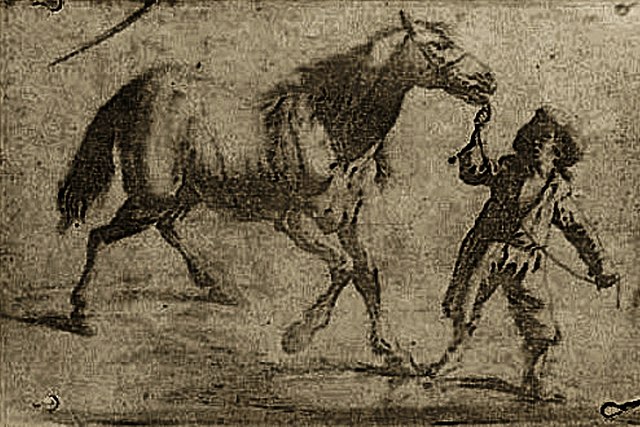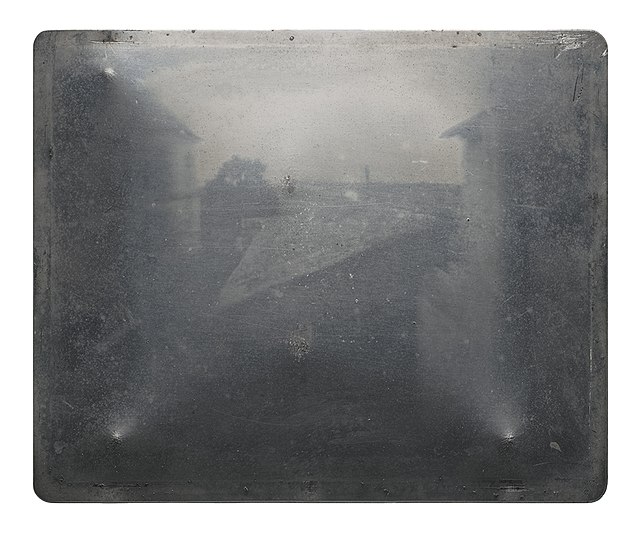Heliography from helios , meaning "sun", and graphein (γράφειν), "writing") is the photographic process invented, and named thus, by Joseph Nicéphore Niépce around 1822, which he used to make the earliest known surviving photograph from nature, View from the Window at Le Gras, and the first realisation of photoresist as means to reproduce artworks through inventions of photolithography and photogravure.
This earliest known surviving heliographic engraving, printed from a metal plate made in 1825 by Joseph Nicéphore Niépce using his "heliographic process". The plate was exposed under an ordinary engraving. Heliography was also used to capture a scene directly from nature with a camera.
Comparison between the original engraving and the heliography of Joseph Nicephore Niépce. Left: Engraving of Portrait of Georges d'Amboise, 1650 right: Heliography (Heliogravure) of the engraving, 1826
View from the Window at Le Gras, by Joseph Nicephore Niepce, 1826 or 1827, France - Harry Ransom Center - University of Texas at Austin
Joseph Nicéphore Niépce was a French inventor and one of the earliest pioneers of photography. Niépce developed heliography, a technique he used to create the world's oldest surviving product of a photographic process: a print made from a photoengraved printing plate in 1825. In 1826 or 1827, he used a primitive camera to produce the oldest surviving photograph of a real-world scene. Among Niépce's other inventions was the Pyréolophore, one of the world's first internal combustion engines, which he conceived, created, and developed with his older brother Claude Niépce.
Portrait circa 1820
Niépce's birthplace at Chalon-sur-Saône, with a plaque in his memory
One of the three earliest known photographic artifacts, created by Nicéphore Niépce in 1825. It is an ink-on-paper print, but the printing plate used to make it was photographically created by Niépce's heliography process. It reproduces a 17th-century Flemish engraving.
The earliest saved photographic image (Heliograph on pewter plate) from 1826 or 1827 by Joseph Nicéphore Niépce, taken at Le Gras, France.






